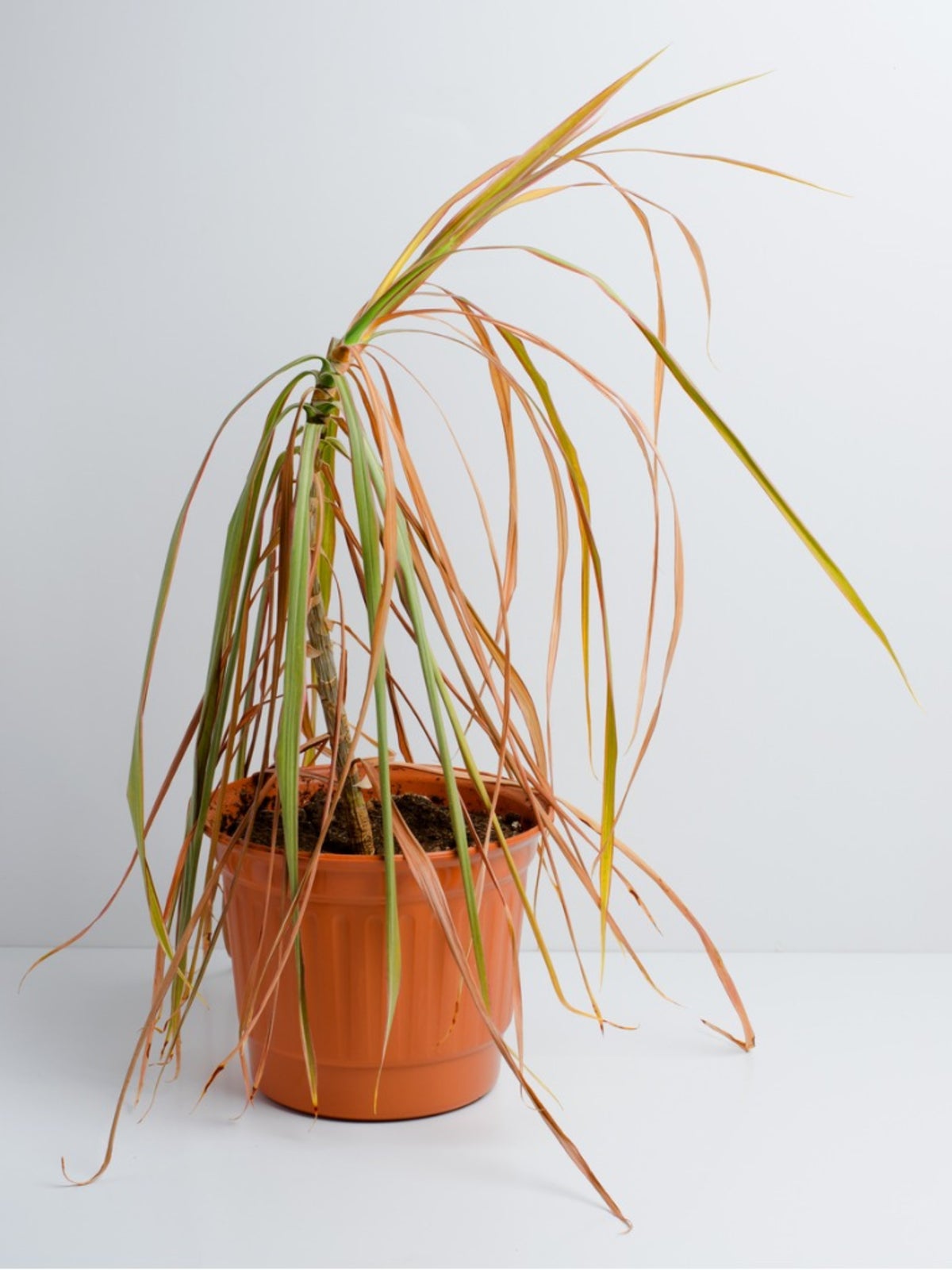Dracaena Leaves Are Brown – What Causes Brown Leaves On Dracaena Plants


Dracaena is a very common and easy to grow houseplant. In some regions, you can even add it to your outdoor landscape. While few problems plague this popular plant, brown leaves on Dracaena are fairly common. The reasons for a Dracaena with brown leaves range from cultural to situational and into pest or disease issues. Continue reading for a diagnosis on why your Dracaena's leaves are turning brown.
Why are My Dracaena's Leaves Turning Brown?
Foliar changes on houseplants occur occasionally. In the case of browning Dracaena leaves, the cause could stem from many things. These tropical plants thrive in temperatures of 70 to 80 degrees Fahrenheit (21-26 C.) and can experience leaf browning in cooler temperatures. The most common cause when Dracaena leaves are brown arises from the type of water you use. Dracaena's are extremely sensitive to excess fluoride. In certain municipalities, fluoride is added to drinking water and can make levels too high for Dracaena. This will accumulate in soil from irrigation water and can cause yellowing of leaf tips and margins which progresses to brown as the toxicity builds up. Fluoride toxicity can also come from potting soils with perlite or from using a fertilizer with superphosphate. Avoid potting soils with those little white pellets (perlite) and use a balanced liquid fertilizer and non-fluoridated water. Flushing the soil to remove excess fertilizer salts will also help prevent leaf damage.
Other Reasons for Browning Dracaena Leaves
If your water isn't fluoridated and you have a medium free of perlite, perhaps the cause of a Dracaena with brown leaves is low humidity. As a tropical plant, Dracaena needs ambient moisture and warm temperatures. If humidity is low, brown tips form on the plant. One easy way to add ambient moisture in the home interior is by lining a saucer with pebbles and water and placing the plant on it. The water evaporates and enhances ambient moisture without drowning the roots. Other options are a humidifier or misting the leaves daily. Fusarium leaf spot affects many types of plants including food crops, ornamentals and even bulbs. It is a fungal disease that thrives in moist, warm temperatures and survives in soil for many seasons. Young Dracaena leaves are brown to reddish brown with yellow halos. As the disease progresses, the older leaves will develop lesions. Most of the discoloration is at the base of leaves. Prevent the disease by using a fungicide and avoid overhead watering when leaves are not able to dry out quickly.
Sign up for the Gardening Know How newsletter today and receive a free copy of our e-book "How to Grow Delicious Tomatoes".

Bonnie Grant is a professional landscaper with a Certification in Urban Gardening. She has been gardening and writing for 15 years. A former professional chef, she has a passion for edible landscaping.